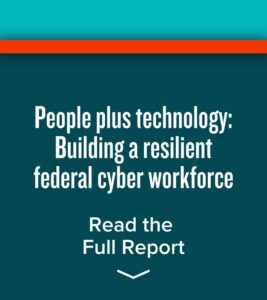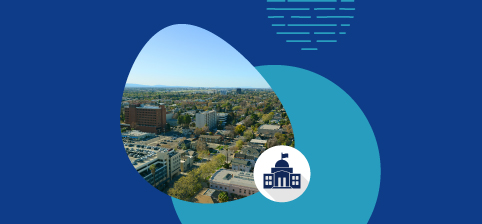Filling cyber jobs in Federal agencies is complicated – it requires competing with industry salaries, retaining existing talent and navigating the Federal hiring process. It’s a far-reaching challenge that affects every agency – the administration knows that, the Office of Personnel Management knows that, and agency technology and human resources leaders know that. And federal C suite leaders realize how the government recruits, hires and retains people for cyber jobs has to change. In partnership with FNN, our Federal Cyber Workforce guide takes a look at what the government is doing to tackle this problem on a sweeping federal level and also on a more agency-specific level. We also get industry perspective on the technologies that affect cyber workforce resiliency. We hope it provides some guidance and help as your agency works to beef up its cybersecurity, both through investments in people and technology.
 3 Key Rallying Points for a Resilient Cybersecurity Team
3 Key Rallying Points for a Resilient Cybersecurity Team
“Agencies are currently operating in a high-threat environment, but that doesn’t mean they can’t implement a reasonable amount of information assurance. It may not be perfect, but it doesn’t have to be. The idea is to make it so that adversaries have to work extremely hard to penetrate the infrastructure. The adversaries are good, but agencies can be better with a resilient cybersecurity team, said Mark Bowling, chief risk, security and information security officer for ExtraHop. The key to achieving this is to have a risk reduction perspective.”
Read more insights from Mark Bowling, Chief Risk, Security and Information Security Officer at ExtraHop.
Do not Wait for a Breach: Why to Adopt Proactive Approach to Cyber Resilience
“When most people talk about cyber resilience, they’re referring to post-breach recovery — the means, methods and speed with which an organization can get its systems and services back online after a cyber incident. But Felipe Fernandez, federal chief technology officer at Fortinet, views resiliency more holistically. His advice? Agencies need to take a proactive stance on cyber resilience and include not only recovery from breaches but also when their planning for non-malicious threats and other operational disruptions, including those associated with cloud-based services.”
Read more insights from Felipe Fernandez, Federal Chief Technology Officer at Fortinet.
Proactively Improve Digital Employee Experience Though Automation
“Digital modernization and the adoption of collaboration tools is supposed to make work easier, especially in a hybrid environment. Employees want the flexibility to be productive in whatever manner best suits them. Unresolved technology issues can impede productivity. In its latest survey of industry employees and IT professionals, Ivanti found that 49% of employees are frustrated with the tools they use and 26% are considering leaving their jobs because of that. Employee experience is a top priority in government right now, and employees are internal customers of an agency’s IT services. By improving their experience your agency can realize gains in productivity and retention.”
Read more insights from Mareike Fondufe, Product Marketing Director at Ivanti.
Download the full Expert Edition for more insights from these cyber workforce leaders and additional government interviews, historical perspectives and industry research.






